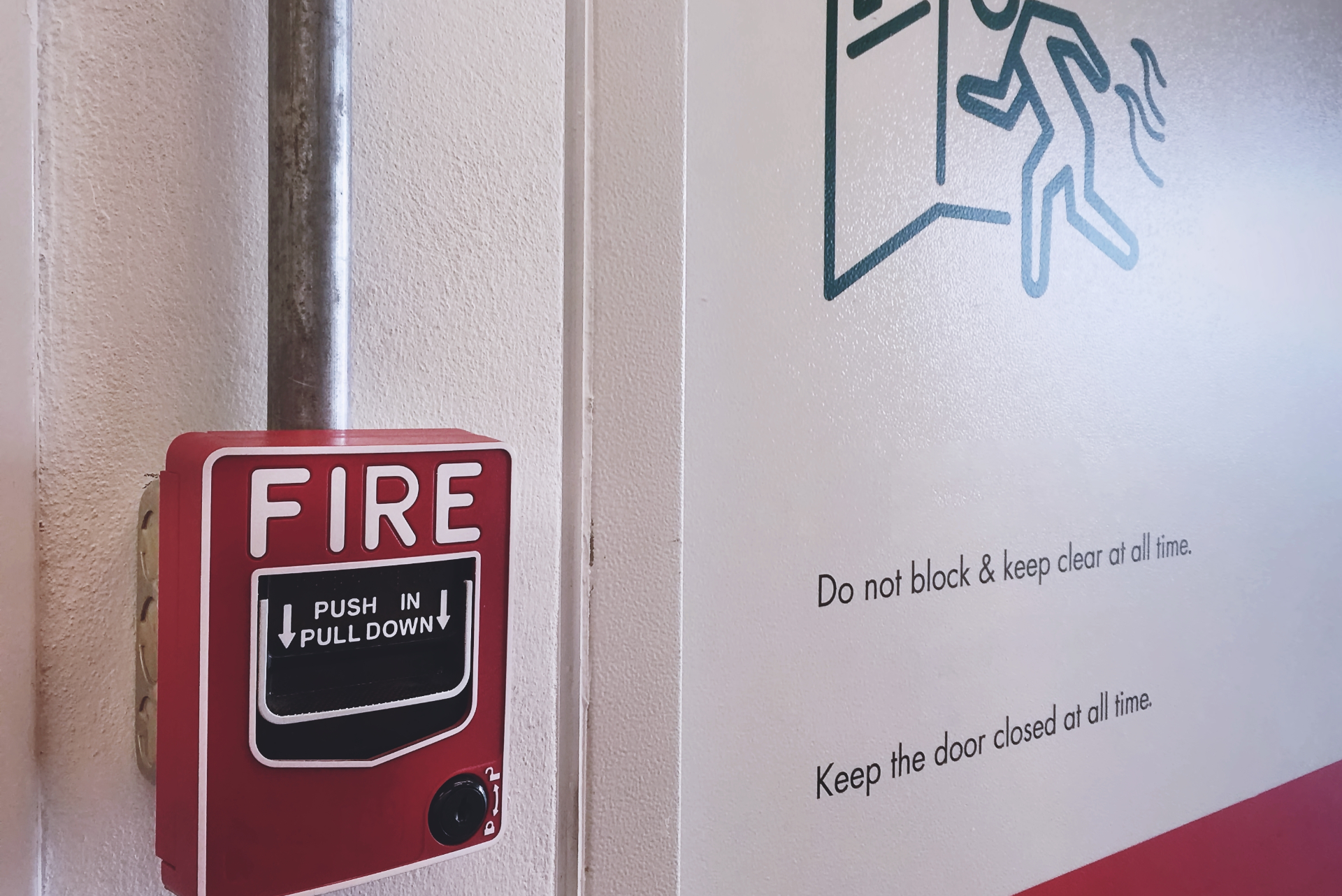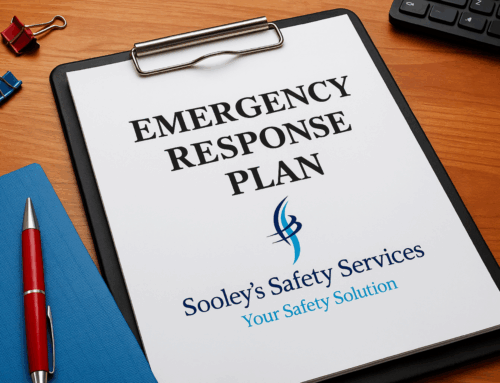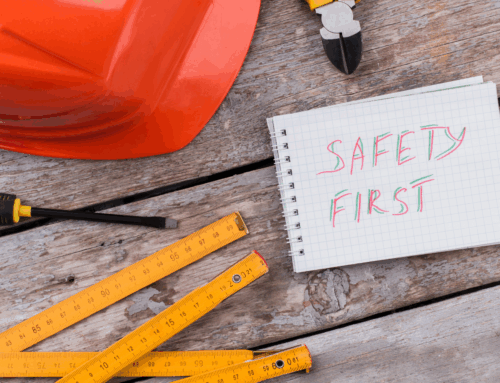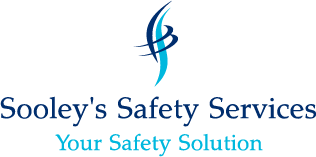Fire can arise in many different environments. We always hear about fire safety in the home, and the importance of making sure smoke alarms work properly and having fire extinguishers in the house in case of a small fire. There are also larger fires in some areas of the world where dry conditions lead to wildfires. In the workplace there are fire concerns due to materials, production processes and even during holiday seasons, when parties are commonly held.
Fact: One in three fire deaths in Ontario occur during the months of November, December, and January.
What is Fire?
Fire is a chemical reaction that requires three elements to be present for the reaction to take place and continue. The three elements are heat or an ignition source, fuel and oxygen. These three elements typically are referred to as the “fire triangle.” Fire is the result of the reaction between the fuel and oxygen in the air. Scientists developed the concept of a fire triangle to aid in understanding of the cause of fires and how they can be prevented and extinguished. Heat, fuel and oxygen must combine in a precise way for a fire to start and continue to burn. If one element of the fire triangle is not present or removed, fire will not start, or if already burning, will extinguish.
Ignition sources can include any material, equipment or operation that emits a spark or flame—including obvious items, such as torches, as well as less obvious items, such as static electricity and grinding operations. Equipment or components that radiate heat, such as kettles, catalytic converters and mufflers, also can be ignition sources.
Fuel sources include combustible materials, such as wood, paper, trash and clothing; flammable liquids, such as gasoline or solvents; and flammable gases, such as propane or natural gas.
Oxygen in the fire triangle comes from the air in the atmosphere. Air contains approximately 79 percent nitrogen and 21 percent oxygen. Depending on the type of fuel involved, fires can occur with much lower volume of oxygen present than needed to support human respiration.
Fire Hazards
Workplaces have an abundance of all three of the fire triangle elements presents. The key to preventing fires is to keep heat and ignition sources away from materials, equipment and structures that could act as fuel to complete the fire triangle. A high standard of housekeeping and building maintenance is probably the most important single factor in the prevention of fire. Listed below are some specific hazards to be aware of:
• Combustible material stored in non-approved areas.
• Fire and smoke barrier door not operating properly or wedged open.
• Improper storage of flammable liquids and gases.
• Defective electrical wiring and appliances, over-fusing and the use of extension cords as permanent wiring.
• Clothes dryer lint collector full or improperly vented.
• Careless use of smoking materials.
• Kitchen hoods and filters not cleaned properly/grease laden.
• Improper disposal of oily rags.
Fire Classifications
Fires are classified as A, B, C, D or K based on the type of substance that is the fuel for the fire, as follows:
• Class A: Fires involving ordinary combustibles, such as paper, trash, some plastics, wood, and cloth. A general rule of thumb is if it leaves an ash behind, it is a class “A” fire.
• Class B: Fires involving flammable gases or liquids, such as propane, oil and gasoline.
• Class C: Fires involving energized electrical components.
• Class D: Fires involving metal. A rule of thumb is if the name of the metal ends with the letters “um,” it is a class “D” fire. Examples of this are aluminum, magnesium, beryllium and sodium.
• Class K: Fires involving vegetable or animal cooking oils or fats; common in commercial cooking operations using deep fat fryers.
Fire Prevention
Fire prevention requires segregating the three elements of the fire triangle. Some measures to incorporate into your fire safety planning include:
Fire Safety Plans
A fire safety plan is a detailed document that covers all aspects of fire safety for a specific building or property. The plan will outline a safe and orderly way for occupants to evacuate the building, proper maintenance and housekeeping required to prevent fires and methods of control that minimize the damage from fires when they do occur.
Fire safety plans are required by your local Fire Code, especially for certain buildings and occupancy rates. Conducting an audit or review of the property or business will help identify factors that could affect fire safety. Items in this audit include site layout, points of entry/exit, roadways, use of the building, where and how items are stored, how items are used, water or fire department connections, alarm/sprinkler systems, and many other factors. Fire safety plans include:
• Emergency procedures to be used in case of fire, including how to:
o Sound the alarm
o Notify the fire department, building or business officials or other designated staff as specified in the plan
o Evacuate occupants
o Evacuate persons who may need assistance
o Confine, control and extinguish the fire where possible.
• Method and how often fire drills will be conducted.
• Information for any designated staff who have been given fire safety duties and responsibilities.
• Organization, education and training for staff with fire safety duties.
• Information and actions to take to prevent or control fire hazards for that building or business, where appropriate.
• Other staff education and training that may be necessary.
• Detailed maintenance procedures for fire protection systems.
• Diagrams and instructions about the type, location and operation of any fire or emergency systems.
• Identification of alternative fire safety measures.
• Allow fire department access to the building and to the fire location within the building.
Fire Extinguishers
There are different types of fire extinguishers designed to put out the different classes of fire. Selecting the appropriate fire extinguisher is an important consideration. The wrong extinguisher can make a fire emergency worse. Check the label on the extinguisher for the types of fires that can be extinguished. When using the fire extinguisher, spraying the top of the fire is useless. Use the following process, better known as PASS:
• PULL the safety pin, which is usually a twist-pull action.
• AIM the nozzle, horn, or hose at the base of the fire.
• SQUEEZE the trigger handle.
• SWEEP from side to side (watch and ensure the fire will not re-ignite)
• Also, keep in mind the following:
• Locate extinguishers in areas at exits and where the greatest hazard exists
• Ensure extinguishers are properly installed and secured as follows:
o Portable extinguishers weighing more than 18 kg (or 39 lbs.) should be installed so that the top of the extinguisher is not more than 1.1 m (or 3.6 ft.) above the floor.
o Portable extinguishers weighing 18 kg or less must not be more than 1.5 m (or 5 ft.) above the floor.
o Ensure hangers securing the fire extinguishers can support the weight and are solidly fixed to the mounting structure.
• Avoid mounting in areas of high foot/vehicle traffic.
• Make easily visible and accessible.
Fire Safety Tips
• Ensure fire exit doors are easily opened in the event of an emergency.
• Ensure fire doors are not obstructed and are not propped open.
• Ensure exit signs are illuminated and visible.
• Ensure there is no smoking inside any building, including stairwells or ramps.
• Do not overload electrical circuits and remove frayed extension cords from usage.
• Provide enough appropriate fire extinguishers that are inspected and maintained according to the local fire code (e.g., inspect monthly).
• Every month, ensure emergency lights are functional and aiming at the nearest exit.
• In storage facilities, ensure there is at least 18 inches of clearance between sprinkler heads and merchandise.
• Never put burning materials into garbage containers.
• Ensure space heaters are unplugged before leaving for the night and keep them away from flammables.
• Train all employees to be aware of these fire hazards and to report any hazard they notice to their Supervisor right away.
• Train all employees on proper evacuation procedures, review these and have regular fire drills (e.g., at least once per year).
• Ensure there is no smoking inside any building including garages, stairwells or ramps.
• Do not overload electrical circuits and remove frayed extension cords from usage.
• Provide and ensure an appropriate fire extinguisher is always present on the job site and ensure it is fully charged.
• Follow good housekeeping practices and do not allow combustibles and materials that could be flammable accumulate.
• Store flammable liquids in approved containers that are properly labeled and sealed.
• Inspect workplaces daily to check for:
o Any accumulation of fire hazards
o Egress routes are clear and free of trip hazards
o Chemicals are stored correctly and away from ignition sources
• Extinguishers should be inspected monthly by
o Checking the pressure gauge
o Inspecting the rubber hose and fitting
o Inverting extinguishers several times to re-suspend the material
o Ensure inspection cards are completed with name and date of inspection
Combustible Materials
A high standard of housekeeping and maintenance are probably the most important factors in the prevention of fire. When flammable and combustible materials are present, the following measures need to be taken:
• Combustible materials shall not be permitted to accumulate in quantities and locations which will constitute a fire hazard.
• Combustible materials shall not be permitted to accumulate in any part of a stairway or other means of egress.
• Combustible materials shall not be used to absorb flammable or combustible liquid spills within the building.
• Greasy or oily rags or materials subject to spontaneous heating shall be deposited in a proper safety container or be removed from the premises.
• Flammable liquids must not be used for cleaning purposes.
• Dispense and store flammable liquids in approved containers that are properly labeled and sealed.
• Devices having open flames shall be securely supported in noncombustible holders and located or protected to prevent the flame accidentally contacting combustible materials.
• All employees involved in the handling, use and storage of flammable and combustible materials are required to know the hazards associated with these materials.
• SDS Sheets must be readily available for all hazardous materials.
If you have further questions or would like to learn more, please contact me at 416 984 1107 or doug@sooleyssafetyservices.ca
Remember, Prevent, not React. At Sooley’s Safety Services, that’s what we do.







